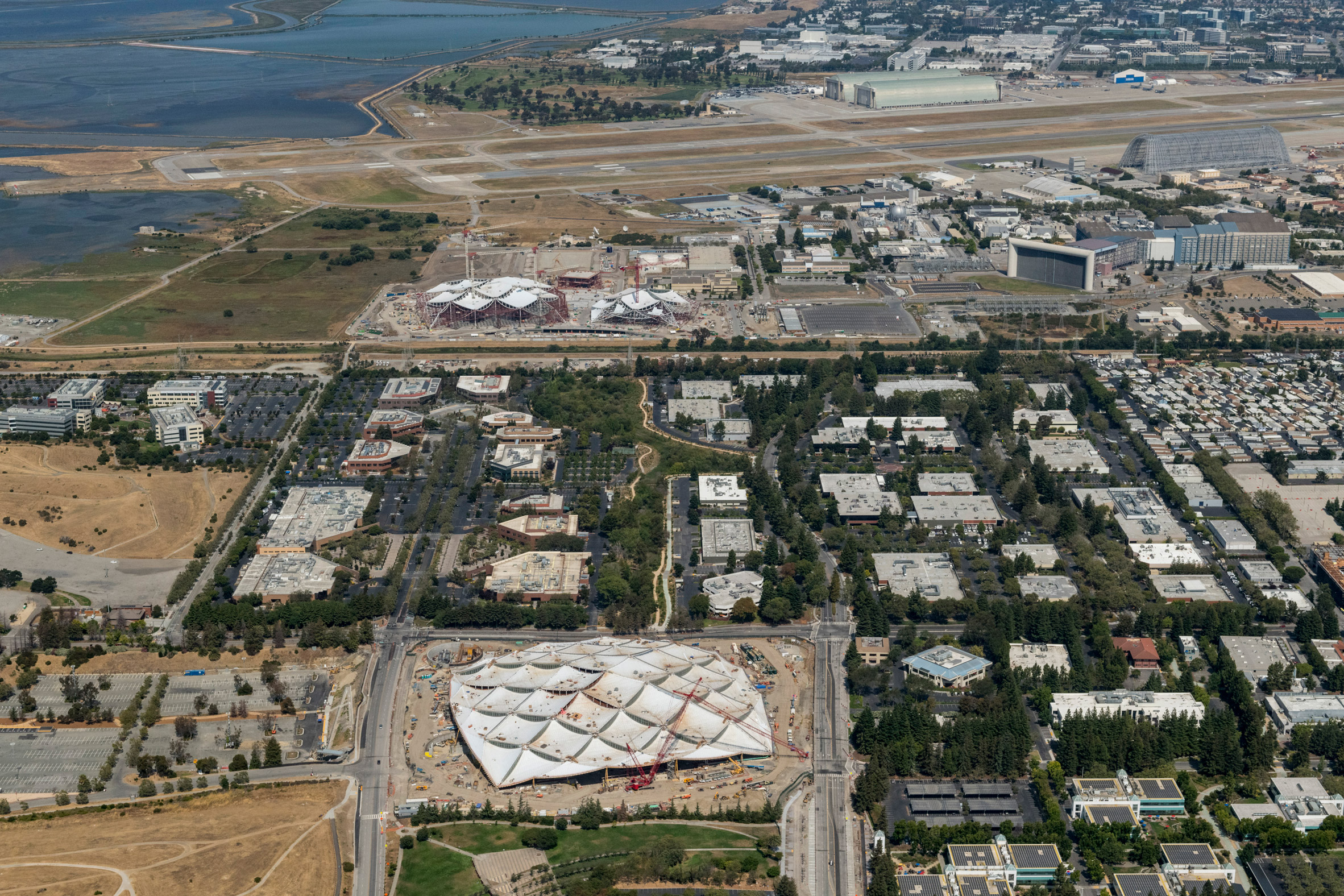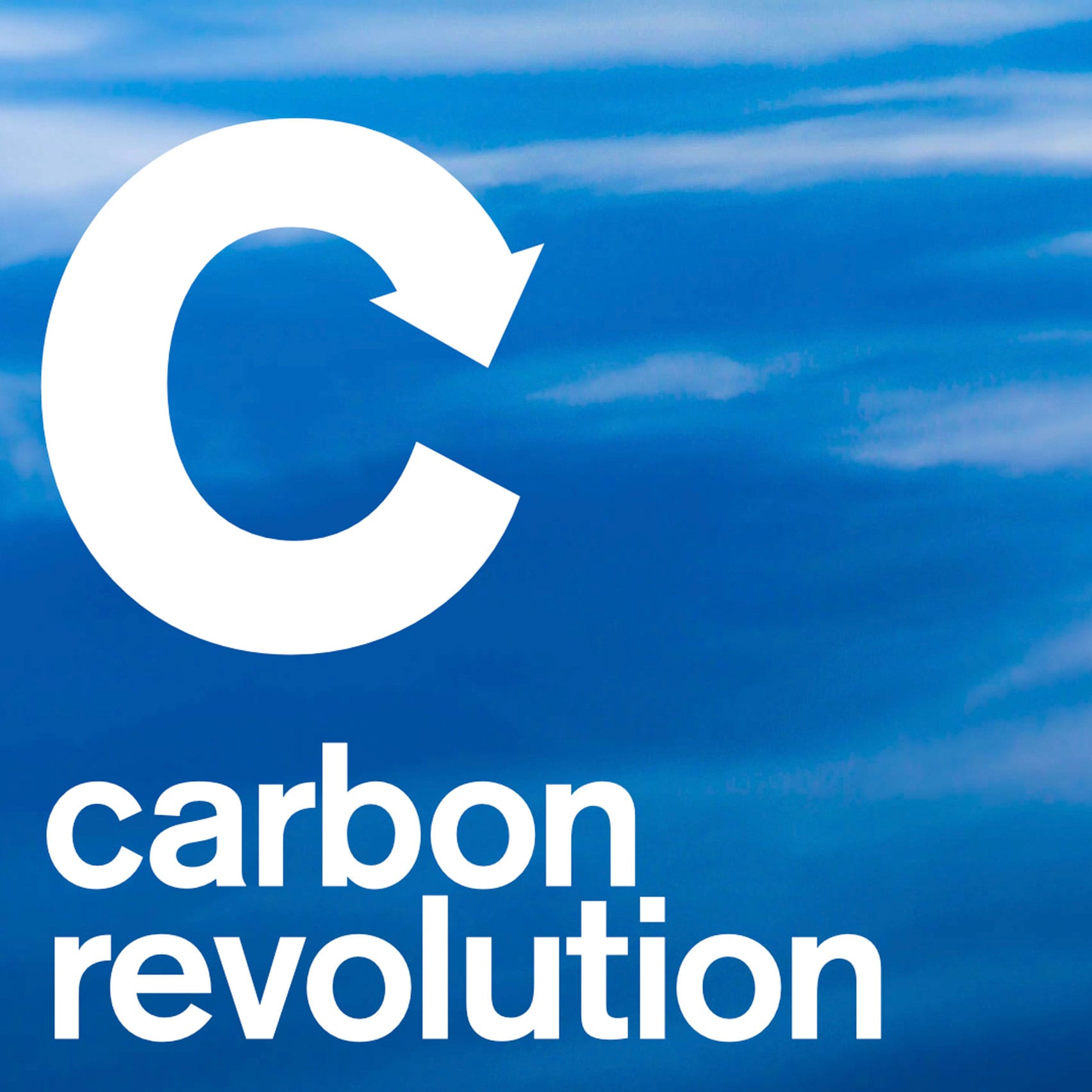
Google continues to emit greenhouse gases despite claiming to be carbon neutral, Dezeen has learned.
The tech giant, which says it has been carbon neutral since 2007 and claims to have eliminated its entire carbon legacy, has emitted around 20 million tonnes of carbon in that period.
Yet it has adopted a definition of carbon neutrality that allows it to claim its carbon footprint is zero while remaining an ongoing contributor to atmospheric carbon.
"Carbon neutrality still allows you to emit"
"Our legacy on carbon dates back to 2007 when we were the first major company to achieve carbon neutrality, and that was just nine years after we were founded," said Robin Bass, real estate and workplace services sustainability programs lead at Google.
"We are carbon neutral in terms of purchasing renewable energy to offset all of our consumption and eliminating our legacy carbon, which is also part of our strategy."

However, Bass admitted that the approach meant that the company continues to emit CO2 and that its offsetting programme does not compensate for its emissions by removing carbon from the atmosphere.
"Carbon neutrality still allows for carbon emissions," she told Dezeen. "People are using a lot of different terms and some of them mean different things.
"The way that I think about it is that carbon neutrality still allows you to emit," she continued. "You can still be producing carbon, you can still be connected to a grid that is burning coal or some fossil fuel."
"And as long as you offset that by purchasing renewable energy somewhere, you can still achieve carbon neutrality."
Offsetting is a "fallacy"
Google's stance aligns with the international PAS 2060 standard for carbon neutrality. This allows companies to claim they are carbon neutral if they use offsets or carbon credits.
However, offsets that prevent additional CO2 from reaching the atmosphere, for example by buying renewable power or capturing emissions from factories, do not negate the emissions that have already been made.

Unlike net-zero, which is a far more demanding standard that has become the global benchmark for decarbonisation, carbon neutrality allows companies to continue emitting more CO2 than they remove from the atmosphere.
Offsets are becoming increasingly controversial. "I call it the fallacy of the offset," sustainable design guru William McDonough told Dezeen in an interview last month.
"If somebody says, oh, I've got this much renewable power and I'm gonna offset my carbon emissions, you have to be very careful," McDonough said. "That would logically then say that if you doubled your renewables, you could double your carbon and still be net-zero."
"That doesn't make any sense at all, because the atmosphere absorbs twice as much carbon. Renewables don't equal to [removing] carbon."
True net-zero "requires carbon removal"
Speaking to Dezeen this week, Taylor Francis of decarbonisation platform Watershed said that net-zero emissions can only be achieved by removing carbon from the atmosphere.
"We strongly believe that true net-zero requires carbon removal, which is taking carbon out of the atmosphere, rather than traditional offsets, which involve paying someone else not to emit carbon into the atmosphere," he said.
Google says it became carbon neutral in 2007. In September last year, CEO Sundar Pichai announced that the firm had eliminated its carbon legacy dating back to its foundation in 1998.
"As of today, we have eliminated Google's entire carbon legacy (covering all our operational emissions before we became carbon neutral in 2007) through the purchase of high-quality carbon offsets," he stated in a keynote address.
"This means that Google's lifetime net carbon footprint is now zero."
Offsets make emissions "lower than they would have been"
However, a white paper outlining Google's carbon offsets explains that these merely make emissions "lower than they would have been" rather than bringing them to zero.
"At Google, we reduce our carbon footprint through efficiency improvements, generating on-site solar power and purchasing green power," the white paper states.
"To bring our remaining footprint to zero, we buy carbon offsets. A carbon offset is an investment in an activity that reduces carbon emissions. The reduction in carbon emissions is represented by a carbon credit."
"The credit, usually verified by a third party, signifies that greenhouse gas emissions are lower than they would have been had no one invested in the offset."
Google invests in offsets that burn captured methane
Google uses offsets that include capturing methane from landfill sites and agricultural sites. The methane is "captured and used or burned". It also works with forestry projects that "protect forests from destruction and degradation or [...] enhance and develop new ones".
The white paper states that since 2007, Google has "partnered with more than 40 carbon offset projects to offset more than 20 million tCO2e emissions".
This means that it must have emitted an equivalent amount – 20 million tonnes of carbon dioxide equivalent – over the same period.
Bass works on the sustainability aspects of new Google buildings including the emerging campus at Mountain View in California, which has been designed by Bjarke Ingels Group and Thomas Heatherwick.
"We have a strategy to look for and innovate with manufacturers on lower-carbon options [for building materials]," she said, adding that in terms of lowering the embodied carbon of Google buildings, "we're absolutely tracking all of that".
"We've looked at the best-case scenario for mass timber. We will still use concrete and steel so we're really driving innovation on both of those materials, which have a very big [carbon] footprint. There's a lot of really exciting technology coming out for both of those products."
Mountain View campus topped with "dragonscale" solar panels
The giant Mountain View building will generate some of its power from "dragonscale" solar panels on its roof while geothermal pilings will help heat and cool the building.
Pichai discussed the project in another keynote in May this year when he said the project was part of Google's "moonshot" drive to achieve "24/7 carbon-free energy" by 2030.
"When completed, these buildings will feature a first-of-its-kind dragonscale solar skin, equipped with 90,000 silver solar panels and the capacity to generate nearly 7 megawatts," he said.
"They will house the largest geothermal pile system in North America to help heat buildings in the winter and cool them in the summer. It's been amazing to see it come to life."
However, Bass was unable to say what percentage of the building's power would be generated by the solar and geothermal systems.
In order to meet the objectives of the 2015 Paris Agreement and keep global warming within 1.5 degrees Celsius of pre-industrial levels, the global economy needs to halve emissions by 2030 and become net-zero by 2050.
Google aims to reduce Scope 3 emissions by 50 per cent this year
Last month, Google signed up to the United Nations' Race to Zero campaign, which helps companies align their strategies with the Paris goals and achieve net-zero emissions.
Net-zero involves eliminating "Scope 3" emissions, which are emissions generated by a company's supply chain, including embodied carbon emissions caused by the construction of new buildings as well as emissions caused by customers using a company's products. These are the hardest emissions to eliminate.
"We will set a science-based target to reduce our Scope 3 emissions by at least 50 per cent later this year, in line with the guidance from UN's Race to Zero campaign and Exponential Roadmap Initiative," Google told Dezeen.
The United Nations' Race to Zero campaign defines net-zero as meaning no carbon is added to the atmosphere either directly or indirectly over the entire lifecycle, which includes materials used in a project and emissions caused by customers using a product, service or building.
"There's always more work to do"
Where emissions cannot be eliminated, they can be offset using carbon removal schemes that directly capture carbon from the atmosphere, for example via biomass or direct air capture technology. Offsetting schemes that reduce or defer emissions do not count, making Google's offsets incompatible with the Race to Zero.
"There's a ton of complexity in what makes something carbon-neutral or carbon-free," Bass said. "As a company, we're addressing it across all of our product areas, and certainly within the REWS [real estate and workplace services] portfolio as well."
"We offset all of our electricity consumption every year and have achieved that since 2017," she added. "Our really big goal is to work with local energy grids by doing things like the dragonscale solar and the geothermal and partnering with them on how we help them transition to cleaner energy supplies as well so that all of our buildings can plug into a clean grid."
"There's always more work to do," she added. "If anyone out there is claiming that they're 100 per cent carbon-free, red flags should be going up everywhere."
Carbon revolution
This article is part of Dezeen's carbon revolution series, which explores how this miracle material could be removed from the atmosphere and put to use on earth. Read all the content at: www.dezeen.com/carbon.
The sky photograph used in the carbon revolution graphic is by Taylor van Riper via Unsplash.
The post Carbon neutrality "still allows for carbon emissions" says Google sustainability lead appeared first on Dezeen.
from Dezeen https://ift.tt/37940XX

No comments:
Post a Comment